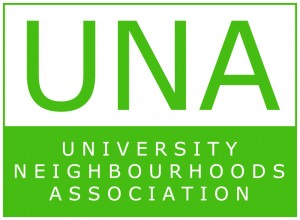UNA Sub-metering
By the end of the 1990’s, Environment Canada found that flat rate customers used 70% more water than metered customers with volume-based rates. Although conventional bulk metering, in residential and commercial buildings, provides reductions in water usage, sub-metering takes a step forward.
Sub-metering is metering that occurs downstream of a water utility master measuring device. It usually entails having a billing system in each apartment in a multifamily dwelling to determine actual water consumption using one or more meters.
The purpose of this project is to determine the technical and economic effectiveness of hot and cold water sub-metering as a means to save water and reduce energy (gas) utilization and greenhouse gas (GHG) emissions. Assistance from University Neighborhoods Association (UNA) and UBC Properties Trust in facilitating the research, and with UBC aims in achieving its aggressive sustainability goals the focus of the study will be multifamily rental homes within the campus.
Expected outcomes
Reduction of ecological footprint: The environmental benefits may be the greatest for a water sub-metering program. This is due to the fact that residents become more aware of their individual resource consumption adopting a more sustainable behavior.
Economic benefits: Sub-metering can also provide a financial incentive to conserve. Without the use of sub-metering, water usage may be apportioned based upon the square footage of the dwelling units or number of bedrooms. These types of allocations cannot be expected to accurately measure the actual water usage of residents. In addition, property owners will be able to offer more competitive rent fees by passing utility expenses to residents who can take action over their own water consumption.
Student engagement and outreach: The project involves direct participation of UNA residents, from which a percentage are students from UBC. The study would provide student residents data about the impacts of their behavior on energy and water consumption. It is predicted that once the meters are installed and tenants are paying for the resource there exists a good probability that they will change their habits.
Different sub-metering schemes are currently being assessed, related to human behavior impact on energy consumption patterns. Four of the buildings have no sub-metering and their information will be used to determine a baseline (what would have happened if sub-metering was not in place). Another two buildings currently have hot water-only sub-metering and are billing their tenants for their consumption. The last two buildings have hot and cold water metering and provide information to the tenants without billing them, but can potentially be charged in the future.
The results will provide valuable information on which scheme is the most effective and feasible in reducing water and energy consumption in multifamily buildings within UNA neighborhoods.
Project started: August 2012
Funding awarded: $6,270
Project Updates
